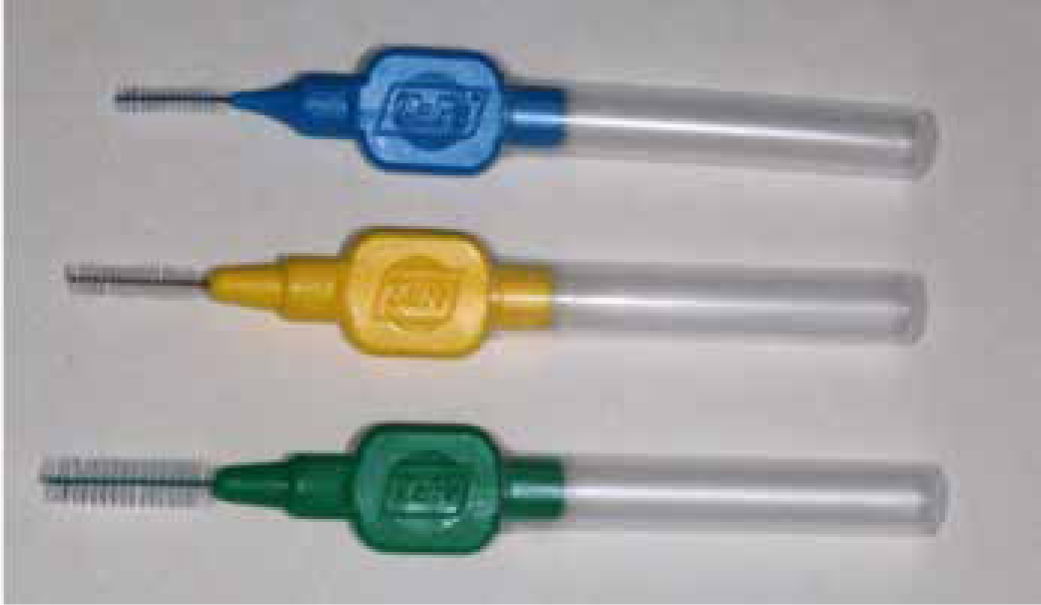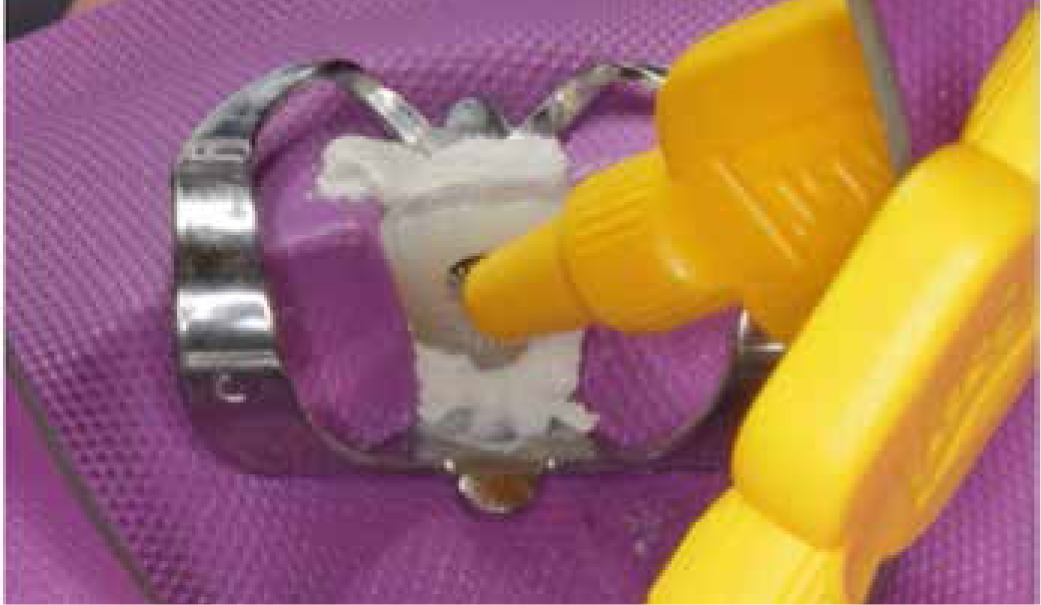Article
Younger patients may require endodontic treatment for a variety of reasons including the consequences of caries, trauma and dental anomalies. In traumatic dental injuries, it is often the incisor teeth that are affected. These teeth can be challenging to root treat and restore because, amongst other things, they have large pulp chambers, thin radicular dentine and/or immature apices.
It has long been established that the majority of the bacteria in an infected root canal system reside in its coronal part. Thus removal of coronal bacteria and shaping of the canal orifice prior to instrumentation of the middle and apical part of the root canal system is a key principle of the crown-down technique.
The use of proprietary brushes to remove debris and inter-appointment medicaments is already documented in the literature.1,2,3 The authors have found that interdental brushes (Figure 1) work similarly to scrub the internal aspect of the root canal system, remove pulpal remnants and aid disinfection of the coronal part of the root canal in conjunction with an appropriate irrigant.

Furthermore, the authors find this especially useful for managing younger patients who have wide canals and little radicular dentine. In such cases, the dentist must diligently limit mechanical instrumentation of the enlarged canal as excessive removal of root dentine through mechanical preparation may further weaken the tooth and risk root fracture.
The authors recommend that clinicians may use this technique to focus more on the chemical end of the chemo-mechanical spectrum to facilitate disinfection of bacteria rather than aggressive mechanical instrumentation.
The authors find that this technique is inexpensive and safe. There is no risk of apical extrusion of irrigants as the spaces between the interdental brush bristles allow movement of the irrigants within the root canal system and thus does not allow creation of sufficient pressure to allow apical extrusion.
The technique involves:


